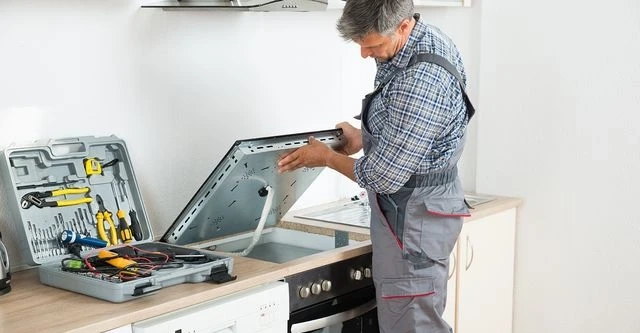In the modern kitchen, the electric stove repair stands as an indispensable appliance, streamlining meal preparation and cooking processes. However, like any other technology, electric stoves are not immune to malfunctions. Whether it\'s an unresponsive burner, erratic temperature control, or a mysterious electrical glitch, electric stove repair becomes a necessary skill for every homeowner. In this article, we will delve into common electric stove issues, troubleshooting techniques, and do-it-yourself solutions to keep your kitchen running smoothly.
Understanding Electric Stove Basics
Before delving into repair techniques, it\'s crucial to grasp the fundamentals of an electric stove. Electric stoves operate by heating up metal coils located beneath the burners. These coils generate heat when electricity flows through them. The temperature is controlled by a thermostat that regulates the current flowing to the coils. Understanding this basic mechanism will be invaluable when diagnosing and repairing stove issues.
Common Electric Stove Issues
- Unresponsive Burners: One of the most frequent problems with electric stoves is unresponsive burners. If a burner fails to heat up when turned on, it could indicate a faulty burner element, a defective socket, or a wiring issue.
- Inaccurate Temperature Control: When you find that your stove\'s temperature settings don\'t match the actual heat output, a malfunctioning thermostat or a faulty temperature sensor may be the culprit.
- Uneven Heating: If your stove heats unevenly, with one side of the burner being significantly hotter than the other, it could be due to a warped burner element or poor electrical connection.
- Electricity Fluctuations and Tripped Breakers: If your stove frequently causes electrical circuit breakers to trip or experiences power fluctuations, it may indicate an electrical issue either within the stove or the home\'s wiring.
- Faulty Indicator Lights: Indicator lights that don\'t illuminate correctly or stay on constantly might be a sign of a control panel problem or a malfunctioning sensor.
Troubleshooting Electric Stove Issues
- Unresponsive Burners: Start by ensuring that the stove is properly plugged in and that the circuit breaker hasn\'t tripped. If the problem persists, switch the burner with a working one to determine if the issue is with the burner itself or the socket. If the problem persists, you may need to replace the burner element.
- Inaccurate Temperature Control: To address temperature discrepancies, consider calibrating the thermostat. Refer to your stove\'s manual for instructions on how to adjust the thermostat settings. If the issue continues, a malfunctioning thermostat may need replacement.
- Uneven Heating: Warped burner elements can cause uneven heating. Gently inspect the elements for any irregularities and replace them if necessary. Additionally, ensure that the elements are sitting properly in their sockets.
- Electricity Fluctuations and Tripped Breakers: If your stove causes frequent breaker trips, it may be drawing too much power or there could be a short circuit. Contact a professional electrician to diagnose and resolve the issue.
- Faulty Indicator Lights: Check for loose connections or damaged wiring behind the control panel. If the indicator lights still malfunction, consult the stove\'s manual or seek professional assistance.
DIY Electric Stove Repair Solutions
While some issues may require professional intervention, there are several DIY solutions you can try before calling in the experts:
- Cleaning and Maintenance: Regularly clean your stove\'s burners and coils to prevent food debris and grease buildup, which can affect performance. A clean stove is less likely to experience heating issues.
- Element Replacement: If you identify a faulty burner element, replacing it is relatively straightforward. Simply unplug the stove, remove the old element, and insert the new one, ensuring a secure fit.
- Calibrating Thermostat: If your stove\'s temperature settings are off, consult the manual to learn how to recalibrate the thermostat. This simple adjustment can often solve temperature control problems.
- Socket Check: Inspect the burner sockets for signs of damage or corrosion. Cleaning or replacing damaged sockets can resolve connectivity issues.
- Indicator Light Repair: Carefully open the control panel and examine the indicator light wiring. Reattach any loose wires or replace damaged components.
When to Call a Professional
While DIY solutions can address minor issues, certain problems are best left to professionals:
- Electrical Wiring Issues: If you suspect an electrical problem beyond basic socket checks, it\'s safer to enlist a qualified electrician\'s help.
- Thermostat Replacement: Calibrating a thermostat is one thing, but if it needs replacement, a professional technician should handle the task.
- Complex Control Panel Problems: If indicator light issues or other control panel malfunctions persist, a professional appliance repair service should be consulted.
Conclusion
Maintaining a functional electric stove is essential for a smooth-running kitchen. Armed with a basic understanding of electric stove operation and common issues, homeowners can confidently troubleshoot and resolve minor problems. Regular cleaning, element replacement, and thermostat calibration are valuable DIY solutions. However, for complex issues and electrical concerns, it\'s always wise to seek the expertise of a professional electrician or appliance repair technician. By mastering the art of electric stove repair, you\'ll ensure that your kitchen remains a hub of culinary creativity and delicious meals.



